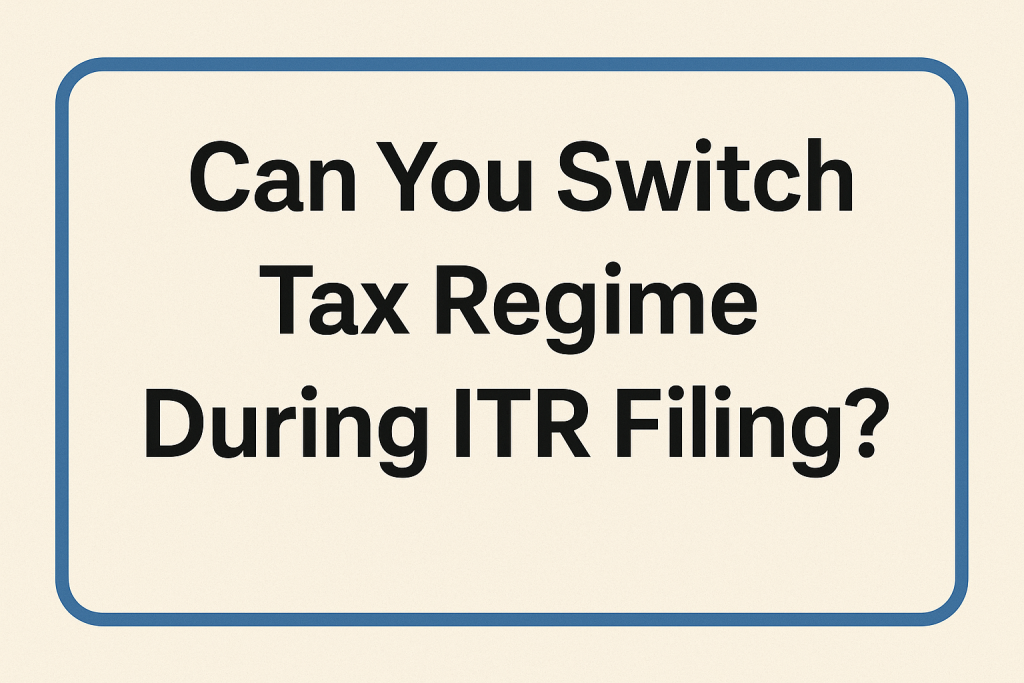Can You Switch Tax Regime During ITR Filing?
The ITR season for 2025 is already underway, with more than 15,000 income tax returns submitted so far. However, many salaried individuals are still awaiting their Form 16 from employers before they can begin the filing process. A common question among taxpayers this year is whether it’s possible to switch tax regimes at the time of filing their income tax return. The answer to this question depends on your source of income and how you’ve managed your tax planning during the financial year.
Who Can Switch Tax Regime?
Salaried individuals and pensioners have the flexibility to opt for either the old or new tax regime each year when filing their income tax return. If an employee did not inform their employer about the preferred regime earlier in the financial year, or if they’ve changed their mind, they can still make the switch while filing the ITR.
However, this flexibility does not fully extend to individuals with business or professional income. For them, there are specific limitations set under the Income Tax Act.
Old Tax Regime vs New Tax Regime
Taxpayers often consider switching between the two regimes to minimize their tax liability. Each regime has distinct advantages:
- New Tax Regime:
- Default regime from FY 2023-24 onwards.
- Offers lower tax rates across slabs.
- Does not allow most exemptions and deductions (like HRA, 80C, 80D, etc.).
- Old Tax Regime:
- Allows taxpayers to claim various deductions and exemptions.
- Suitable for those who have significant investments or eligible expenses.
Choosing the right regime depends on one’s income structure, deductions available, and overall tax planning.
Who Can Switch Tax Regimes Annually?
- Salaried Individuals and Pensioners:
They have the freedom to switch between regimes every assessment year based on what suits them best. - Business Owners or Self-Employed Individuals:
The rules are more restrictive.- A business taxpayer can switch to the new regime once, and if they later opt out, they cannot go back to the new regime in future years (unless they cease to have business income).
- This condition is governed by Section 115BAC of the Income Tax Act, 1961.
How to Switch Tax Regime During ITR Filing?
If you are a taxpayer with business income, here’s how you can switch regimes:
- Visit the Income Tax Portal: https://www.incometax.gov.in
- Log in using your credentials.
- Go to the e-File section and select Income Tax Return.
- Click on File Income Tax Return and choose the appropriate Assessment Year.
- Choose to file the return in online mode.
- In the ‘Personal Information’ section, you will find the question:
“Are you opting for the new tax regime under section 115BAC?” - Select ‘Yes’ for the new regime or ‘No’ to continue with the old regime.
- If you choose ‘Yes’, you may be required to file Form 10IEA for AY 2024–25.
- Continue and complete your ITR filing process.
For taxpayers without business income (filing ITR-1 or ITR-2), you simply need to declare your preferred tax regime in the respective section of the ITR form. There’s no need to file Form 10IEA.
Conclusion
Switching tax regimes is allowed and can be beneficial if chosen wisely. While salaried individuals and pensioners enjoy the flexibility to make this decision annually, business professionals must be more cautious due to once-in-a-lifetime switching restrictions. Always evaluate both regimes based on deductions available and overall tax liability before finalizing your ITR.




